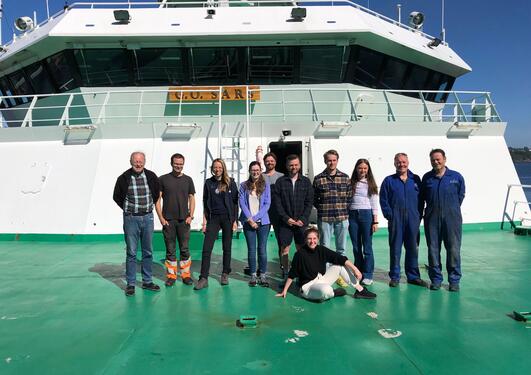The 2022 offshore wind conference Science Meets Industry
The topic of the 2022 conference on 25 October was the speed and volume of the offshore wind energy development in Norwegian waters.

Main content
What will it take to fulfil the ambitions of the Norwegian Government to develop 30 GW offshore wind energy before 2040? State Secretary Elisabeth Sæther, Norwegian Ministry of Petroleum and Energy (OED), opened the conference and presented the policies behind the 30 GW target.
Speakers from the industry and academia offered knowledge and perspectives on how the Norwegian offshore wind development needs to be organised to meet the target.
Is Norway ready for offshore wind?
Professor Sigrid Eskeland Schütz, University of Bergen, talked about the processing of license applications for offshore wind power; is it possible to speed it up while retaining good practice?
Jan Fredrik Stadaas from Equinor talked about lessons learnt so far. He stressed that offshore wind projects are complex and that they are capital intensive projects. It is important to have a continuous pipeline of projects in order to build knowledge and to execute the projects efficiently.
The two presentations were followed by a panel discussion between Stadaas, Eskeland Schütz and senior scientist Atle Blomgren from NORCE. Energy director Kristin Guldbrandsen Frøysa was moderator. A key question raised was if the Norwegian society at large is ready for a massive deployment of offshore wind turbines in Norwegian waters, and if there is political commitment to reach the current goals?
Jon Barratt Nysæther from Odfjell Ocean Wind, followed by Johan Sandberg, Aker Offshore Wind, presented their plans and concepts for offshore wind development in Norway and internationally.
Research and development
Research and education are critical to achieve profitable offshore wind projects in Norwegian waters, and the University of Bergen and NORCE presented some of its research on offshore wind.
Associate Professor Etienne Cheynet, University of Bergen, talked about analysis of metocean conditions at Sørlige Nordsjø II and Utsira Nord.
PhD student Shokoufeh Malekmohammadi, University of Bergen, explained offshore wind measurement using lidars on ships.
Senior Scientist Yngve Heggelund, NORCE, talked about electrification of Oil and Gas Installations by Offshore Wind.
Post Doc Christos Sakaris, NORCE explained damage detection and quantification in the mooring lines of floating offshore wind turbines through the use of statistical methods.
Professor Magne Haveraaen, University of Bergen talked how informatics can contribute to offshore wind projects, i.e. through optimization and AI.
Past, present, and future
Christina Aabo, Aabo Energy, and Professor Finn Gunnar Nielsen, University of Bergen/Bergen Offshore Wind Centre, wrapped up the first part of the conference. They went through some of the progress we have seen in recent years in both the industry and within the field of research and shared their thoughts on the future of offshore wind.
As a surprise stunt following Professor Finn Gunnar Nielsen’s speech, science and industry, in person and on screen, paid tribute to Nielsen for his significant contributions to the development of offshore wind over the past decades. He will soon retire from his position as Director of the Bergen Offshore Wind Centre, but he will continue to work with offshore wind at the university.
Energy islands
Norway’s ambassador to Denmark, Katja Christina Nordgaard, opened the last session on the concept of energy islands.
The Danish company Energinet, through Hanne Storm Edlefsen, presented Denmark’s ambitious plans for utilising its renewable energy sources by building energy islands in the North Sea and the Baltic Sea. What opportunities do these islands represent for Norwegian supply chain in the offshore industries? Kristian Ascanius Jacobsen from Green Ducklings outlined the Norwegian industry’s comparative advantages.

